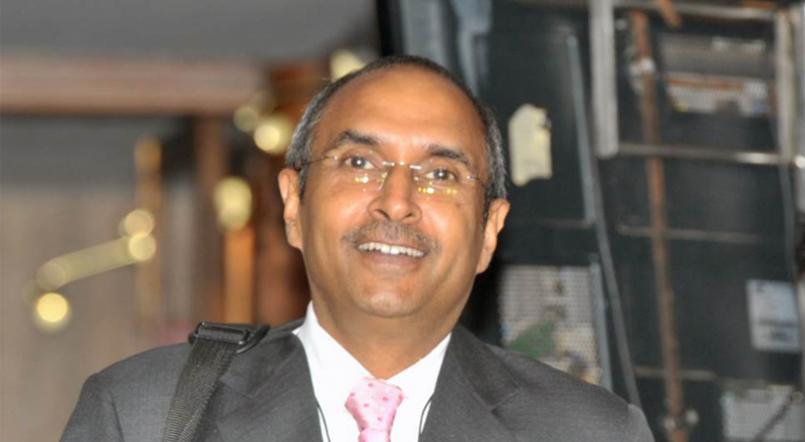SHCS: In your career as a HR leader, you have led many change initiatives. What should HR leaders do to lead change?
Yogi Sriram (YS): In the context of HR leading change in Asia, it is important to be consultative. If done in the right way, consultation helps to get buy-in and determines what needs to be changed and how. As Asian cultures emphasise hierarchy, it is even more critical for HR leaders to embrace consultative styles and be a trusted conscience keeper – to listen and empathise with what employees are saying and, more importantly, understand their feelings. HR leaders need to do this proactively and not wait for employees to approach the HR Department. A diverse approach to consultation can help. For example, leveraging smart phone technologies, town halls, and social media can stimulate employees’ interest to come forward and be a part of change initiatives lead by HR.
What should HR leaders not do when leading change?
YS: HR leaders in Asia should not try to clone and implement Western methods without considering the local culture. Incentive programmes that reward only individual performance work well in Western companies, but these might not have a similar impact in Asian cultures. In countries like India, for instance, programmes that reward retention and loyalty might instead create stronger impact. Schemes of compensation that promote teamwork, retention and employee stock option schemes can be effective in eastern cultures where longevity of service and loyalty is highly valued. HR leaders should also know the art and science of facilitating change through groups and by changing mindsets. This means that they should know about how to lead a discussion, build on thoughts of other leaders and step aside for hearing and synthesising views. What they should not do is to dominate the discussion or impose their thoughts on others; at no point should they be seen as trying to manipulate the group towards a preconceived objective.
In initiating organisational change, you once mentioned that top talent might be stumbling blocks because of their strong views. How can leaders help them understand their blind spots?
YS: Top talent themselves should first demonstrate and be role models of good listening skills. They need to have open minds and not practice hubris. They need to be patient and build on other people’s ideas, sublimating their own egos when confronted with ideas that might be different from their own. Servant leadership is particularly helpful in developing the humility that helps leaders in not being consumed with their own viewpoints.
Leaders might also want to teach their top talent the importance of being good followers. This implies that followers identify a bouquet of role models, rather than following one. By learning from multiple role models, top talent is exposed to multiple perspectives and viewpoints, allowing them to broaden their mindsets. This not only helps develop open attitudes to change, but also allows them to imbibe multiple sets of strengths.
While top talent tend to have strong views, generation Y on the other hand tend not to be patient. They want to move fast. How should HR leaders engage the younger Asian workforce in leading change?
YS: Asian multinationals tend to have a workforce that is younger than their Western counterparts. So when dealing with these young, ambitious employees, one must be patient in answering their many questions, especially about their career path and future growth prospects. Providing the young workforce avenues to showcase their innovations and ideas is also very important and this is not just about innovation of products. In India, 65% of GDP comes from the services sector, and in these sectors you do not manufacture anything. Our young employees can think innovatively about how to provide better service. Whether it is IT or engineering services, innovation is about “doing something better.” Any attempts to do so should be celebrated, just as Kaizen is used for improvement, to be celebrated, and continues to be used, in the Japanese management culture.
The ability to recognise, celebrate and evangelise innovation, no matter how small it may appear, is then extremely important. The greatest satisfaction for young workers is not only being given recognition in public, but also seeing that their innovation is being put to good use.
The greatest satisfaction for young workers is not only being given recognition in public, but also seeing that their innovation is being put to good use.
Reflecting on your 36-year career in HR leadership in Asia, how has the evolved? Where are future opportunities, and what are the things that still need to change?
YS: Back then, HR was a maintenance function, and used to ensure compliance with laws and was indoctrinated mainly into dealing with employee relation issues. Now, it is a strategic business partner involved in business decisions, and it is able to rub shoulders and exchange views with the P&L leaders of the business. Involvement in productivity metrics; employee engagement; organisation design issues; succession planning pipelines; job redesign; and mobility policies – these parts of the job simply did not exist when I started my career!
IT has also created a very different playing field for HR leaders. Today, we have access to sophisticated analytic tools, big databases, and exciting new technologies. We are also interacting with younger, educated, sophisticated workers who are ambitious and ask well thought-out questions. In dealing with this new generation, you are rejuvenating yourself with every new interaction.
However, the ability of HR leaders to navigate and make a difference in complex business environments needs to change. Having the prowess to understand and connect to the business agenda while weaving in the HR agenda to enhance business, is an art that is an extremely important aspect of HR work today. The paradigm for HR leaders needs to shift from simply being transactional to transformational, and making a powerful organisational impact.


